In its simplest terms, the viscosity of chocolate is the liquid consistency when it is melted. It is measured based off the viscosity of water. Water has a score of 1, and anything thicker than that gets a numerical score.
Why does it matter?
Knowing the viscosity of your chocolate can help you to know which application your chocolate might be best suited for.
We break our chocolate down into three categories: Thinner, Standard and Thicker Viscosity.
Thinner Viscosity (below 40): Chocolate fountains
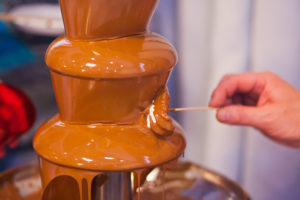
Chocolate fountains need chocolate with a viscosity score below 40. This lower number will allow the chocolate to freely flow through your machine without clogging it. Keep in mind, that this type of chocolate is best suited for chocolate fountains only. The runny nature makes it difficult to use for dipping or coating, you’d likely end up frustrated with the mess it would make! But it sure would taste delicious!
Read here to learn more about lowering the viscosity of your chocolate to make it perfect for your chocolate fountain!
Click here to shop low viscosity chocolate, or chocolate fountain chocolate.
Standard Viscosity (between 40-80): Dipping with a thinner coating, drizzling, molding, and chocolate barks.
This is the most commonly used and purchased chocolate because it is ideal for dipping anything where a thinner coating is desired: fruit, apples, pretzel rods, caramels. It makes a great drizzle and can be used for molds and chocolate barks, especially when you want the option of a thinner chocolate layer.
You can find this level in both compound and couverture chocolate. Don’t know the difference? Read this.
Thicker Viscosity (above 80): Molding, chocolate barks, dipping with a thick coating

This chocolate is the perfect choice for dipping truffles, molding with a thicker shell, and works great for chocolate bark, but will create a thicker layer.
This can also be found in compound and couverture chocolate.
Can you mix different viscosity levels chocolate to get something in between?
It is perfectly fine to mix a thicker and standard viscosity chocolate levels to get a mid-range viscosity that is perfect for exactly what you want to make. This is actually a great solution for many chocolate applications where the chocolate is just a little bit too thick or thin for the application desired.
It is, however, important if you’re going to mix two different viscosities, make sure that you are using the same type of chocolate. A thick compound chocolate can be mixed with a thin compound chocolate. Likewise thick Couverture Chocolate can be mixed with thinner Couverture Chocolate. You would not, however, want to mix a couverture with a compound chocolate, as you need to work with them at different temperature levels and your items would not harden properly.
You can also mix two different flavors (milk, dark or white) of chocolate as long as they are a compound chocolate. If you are using couverture, those chocolates require tempering at different temperatures, therefore making it harder to determine the proper way to temper the chocolate, which could make the whole process a little iffy. Just stick with the same flavor of couverture chocolate for best results.
Buying the Right Kind of Chocolate
When purchasing chocolate from Orson Gygi, you can find the viscosity information on every package of chocolate, or in the “more info” section on each item’s listing our website. If you’re not sure which level you prefer, my best suggestion is to just start using a standard level chocolate and see how it works for you.
It’s such a personal decision, and we’d love to help you make the right choice. Come on into the store, and let us help you! Send us an email or call the store and we’d love to chat with you about finding just the right product for you.
Want to learn more about chocolate? Tempering, storing, melting, and our favorite recipes. Read Chocolate 101.
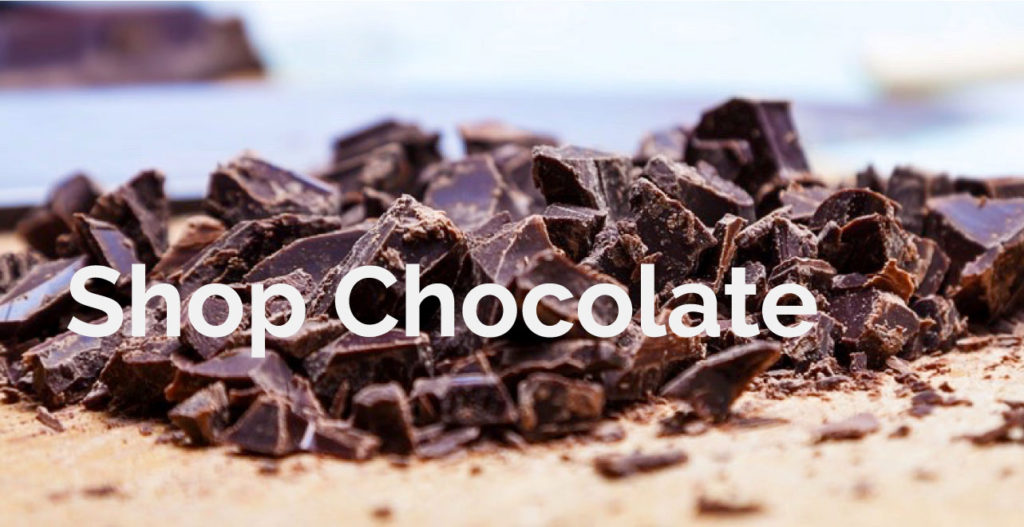

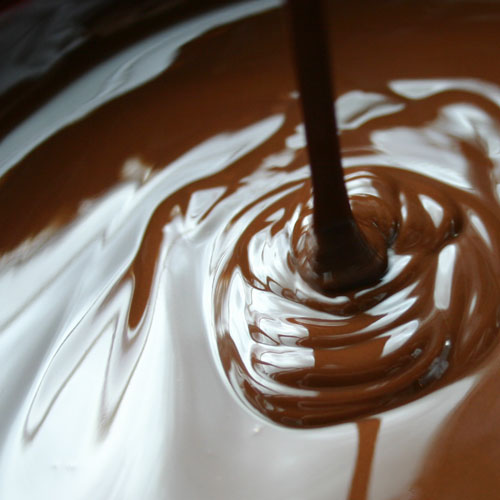
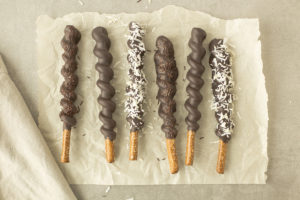
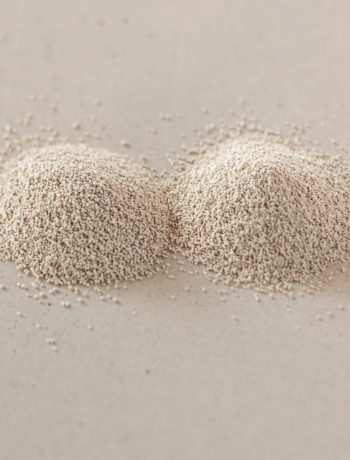
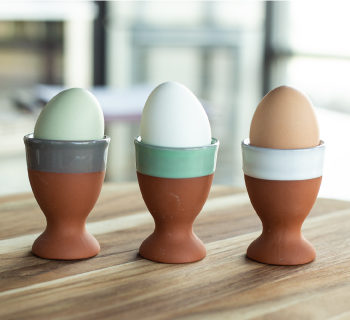
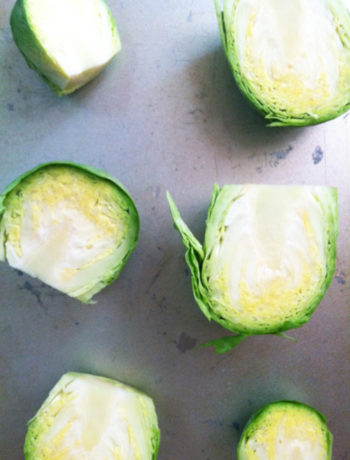
No Comments